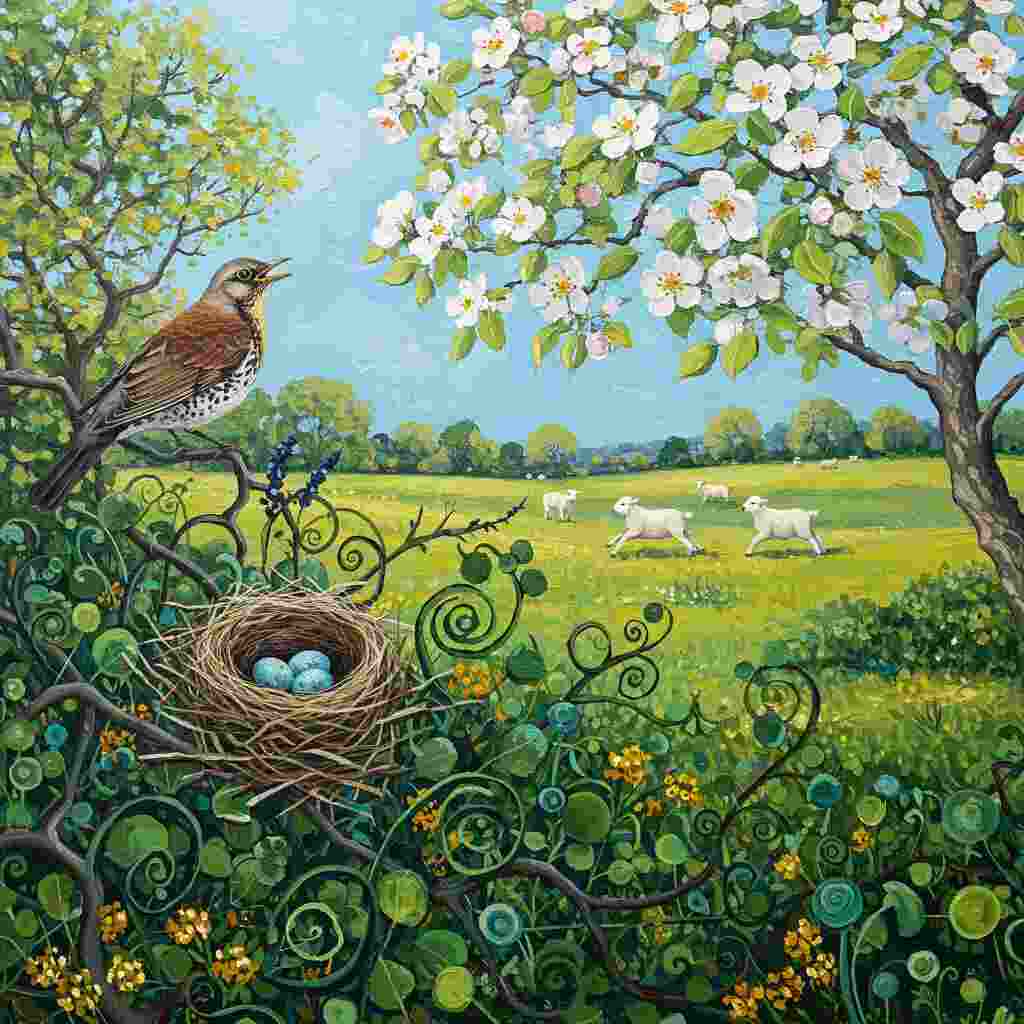7 Poems by Gerard Manley Hopkins
1844 - 1889
Gerard Manley Hopkins Biography
Gerard Manley Hopkins was born on July 28, 1844, in Stratford, Essex, England. He was the eldest of nine children born to Manley and Catherine (Smith) Hopkins. His father was a marine insurance adjuster and a published poet, which likely influenced Hopkins' early interest in literature and poetry.
Hopkins received his early education at Highgate School, where he excelled in classics and began to write poetry. In 1863, he won a scholarship to Balliol College, Oxford, where he studied classics. During his time at Oxford, Hopkins was deeply influenced by the Oxford Movement, a conservative trend within the Church of England that emphasized the church's Catholic heritage.
In 1866, Hopkins converted to Roman Catholicism, a decision that would profoundly influence both his personal life and his poetry. This conversion led to him burning much of his early poetry, which he considered incompatible with his new faith. After graduating from Oxford in 1867 with a first-class honors degree, Hopkins briefly taught at Oratory School in Birmingham.
In 1868, Hopkins made the decision to become a Jesuit priest, entering the Society of Jesus. This decision meant renouncing poetry, as he believed it incompatible with his religious vocation. He spent the next seven years in religious training, including a period teaching classics at Manresa House, Roehampton.
Hopkins was ordained as a priest in 1877. It was only after this, at the suggestion of his religious superior, that Hopkins returned to writing poetry. His first major poem after his long silence was "The Wreck of the Deutschland" (1875-76), inspired by the death of five Franciscan nuns in a shipwreck. This poem introduced many of the innovative techniques that would characterize Hopkins' mature style.
Hopkins' poetry is known for its linguistic experimentation and innovation. He developed what he called "sprung rhythm," a metrical system designed to imitate natural speech rhythms. His work is also characterized by dense sound patterns, unusual syntax, and vivid imagery often drawn from nature.
Some of Hopkins' most famous poems include "Pied Beauty," "God's Grandeur," "The Windhover," and "Spring and Fall." These poems showcase his ability to capture the beauty of the natural world and connect it to spiritual themes, often exploring the relationship between God, nature, and human experience.
Despite the power and originality of his work, Hopkins published very little during his lifetime. His poetry was known only to a small circle of friends and fellow poets, including Robert Bridges, who would later become Poet Laureate and who was instrumental in publishing Hopkins' work posthumously.
Throughout his life, Hopkins struggled with depression, which he referred to as his "melancholy." This internal conflict is reflected in some of his later poems, known as the "terrible sonnets," which express spiritual anguish and doubt.
Hopkins spent the last five years of his life in Dublin, where he was a professor of Greek and Latin literature at University College. He died of typhoid fever on June 8, 1889, at the age of 44.
It wasn't until 1918, nearly 30 years after his death, that Hopkins' friend Robert Bridges published the first edition of his poems. This publication brought Hopkins' work to a wider audience and sparked a reassessment of his importance in the development of modern poetry.
Hopkins' influence on 20th-century poetry has been significant. His experimental use of language, innovative rhythms, and intense compression of thought have been admired and emulated by many later poets. His work bridges the gap between Victorian and Modernist poetry, anticipating many of the techniques used by later poets.
Today, Gerard Manley Hopkins is recognized as one of the most original and influential poets of the Victorian era. His unique style, which combines deep religious faith with a modernist approach to language and form, continues to be studied and celebrated in literary circles. His life and work offer a fascinating example of the intersection between religious devotion and artistic innovation.
This text was generated by AI and is for reference only. Learn more
Username Information
No username is open
Unique usernames are free to use, but donations are always appreciated.
Quick Links
© 2024-2025 R.I.Chalmers (V2Melody).

All music on this site by R.I.Chalmers (V2Melody) is licensed under a Creative Commons Attribution-NonCommercial 4.0 International License.
Attribution Requirement:
When using this music, you must give appropriate credit by including the following statement (or equivalent) wherever the music is used or credited:
“Music by R.I.Chalmers (V2Melody) – https://v2melody.com”
Support My Work:
If you enjoy this music and would like to support future creations, donations are always welcome but never required.
Donate







